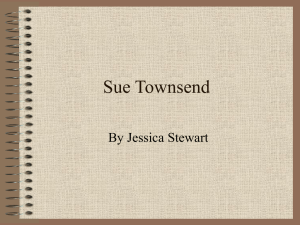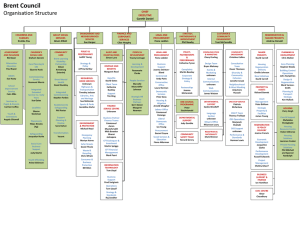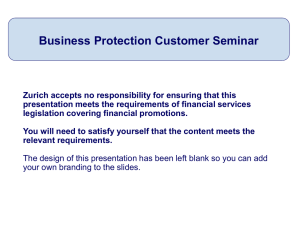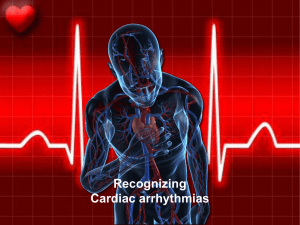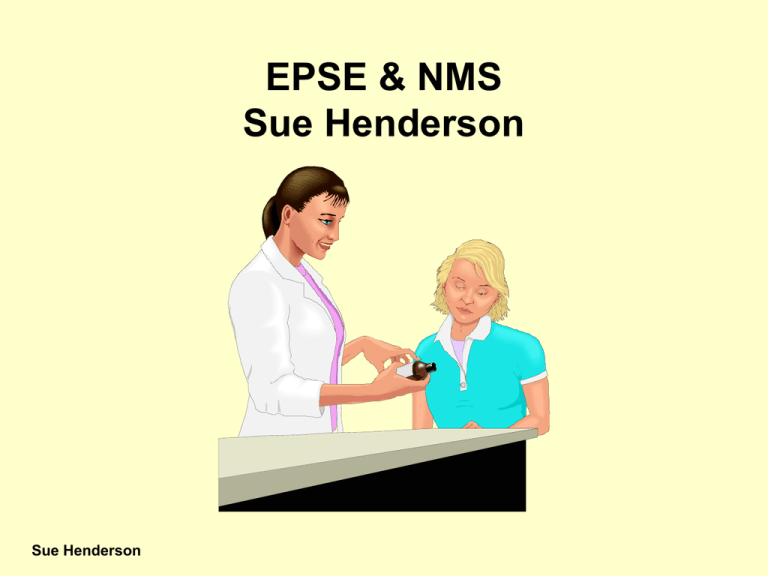
EPSE & NMS
Sue Henderson
Sue Henderson
Those tablets
you gave me are
great but they’re
making me walk
like a crab
Sue Henderson
Well, I did
warn you
about the
side effects
Low potency V High potency
• Low potency Chlorpromazine
(Largactil) 100mg is equivalent to
2mg of Haloperidol (serenace) a high
potency anti-psychotic.
• High potency: high rates of Extra
Pyramidal Side Effects (EPSE)
• Low potency: high rates of anticholinergic side effects
Sue Henderson
Low Potency V High Potency
High Anti-cholinergic & Sedative effects
Chlorpromazine
100 mg
Haloperidol 2 mg
High EPSE
Sue Henderson
Extra pyramidal side effects
(EPSE)
1. Acute dystonias: Oculogyric crisis,
Torticollis, Lock jaw, Laryngeal
spasm, Opisthotonos
2. Akathisia
3. Parkinsonism (Rigidity,
bradykinesia, tremor)
4. Tardive dyskinesia
Sue Henderson
Dystonia: Oculogyric Crisis
• Muscles that
control eyes
movements
spasm.
• Eyes roll up &
person is unable
to look
downward.
Sue Henderson
Oculogryric Crisis
Sue Henderson
Dystonia: Torticollis
• Spasm of neck
muscles.
• Neck is flexed
backwards or to
the side.
Sue Henderson
Dystonia: Lock jaw (Trismus)
• Spasm of jaw
muscle, also
often involves
the muscles of
the tongue and
floor of the
mouth.
Sue Henderson
Dystonia: Opisthotonos
• Spasm of
paravertebral
muscles with
arching of back.
Sue Henderson
Dystonia: Laryngeal spasm
• Rare but potentially
fatal reaction causing
difficulty with
breathing. High risk:
Young males on high
potency
antipsychotic with no
anti-parkinson drug.
Sue Henderson
Treatment Laryngeal spasm
• Emergency.
• Stat parenteral benztropine
(cogentin).
• Maintain airway
• Prevention: Concurrent
antiparkinson or diazepam for young
males on high potency
antipsychotics
Sue Henderson
Akathisia (Most common EPSE)
• Restlessness, an irresistible urge to
move (unable to sit still, pacing) and
a feeling of “nervous energy”.
• Often mistaken for agitation.
Worsened by additional
antipsychotic dosage.
• Common cause of non compliance.
Sue Henderson
Parkinsonism
• Muscle stiffness, rigidity, (cogwheel
& lead pipe) shuffling gait, tremor,
pill rolling, loss of facial expression,
slowed movement (bradykinesia),
reduced arm swing, absent
movement (akinesia), drooling,
stooped posture, tremor of lips
(rabbit syndrome).
Sue Henderson
Drug induced
Pyramid
shape
Parkinsonism
(reversible)
Dopamine &
acetylcholine in
balance = normal
Sue Henderson
function
Dopamine
blockade,
upsets
balance =
tremor,
rigidity,
akinesia
Tardive Dyskinesia
• Serious, potentially irreversible, effect of
prolonged antipsychotics. Abnormal,
involuntary movements of the face,
eyes, mouth, tongue, trunk, limbs.
• Most common: twisting, protruding,
darting tongue movements.
• Chewing & sideways jaw movements.
• Facial grimacing.
Sue Henderson
Sue Henderson
Neuroleptic Malignant
Syndrome (NMS)
• Rare but potentially fatal
• Muscular rigidity (may be localised to
head & neck), incontinence,
confusion or delirium, excessive
variation in BP& P & high Temp.
• Presentation highly variable: hours
after 1st dose to unexpected
appearance after months of
uneventful treatment.
Sue Henderson
Treatment NMS
•
•
•
•
•
Early detection vital to recovery
Stop anti-psychotic
Hydration
Transfer to ICU
Bromocriptine 5-10 mg tds but if no
response
• Dantrolene
Sue Henderson
Side Effect Drugs
Sue Henderson
S/E Drugs: Classification
•
Antiparkinson: Benztropine (Cogentin),
benzhexol, biperiden, orphenadrine
•
Other drugs used to treat EPSE’s
1. Benzodiazepines.
2. Dopamine agonist: Bromocriptive (NMS)
3. Beta blocker: Propanolol (Inderal) &
Clonidine (Catapres, Dixarit)
Sue Henderson
Indication
• Reduce EPSE of
antipsychotics
Sue Henderson
Side Effect Drugs: Action
ACh
ACh
<
=
DA
Excess levels of dopamine (positive
schizophrenia)
DA
Dopamine blocking antipsychotic
drugs decrease effect of dopamine
ACh
>
ACh
=
Sue Henderson
DA
DA
Sometimes antipsychotic drugs
block too much dopamine
creating a pseudo-parkinsonism
Antiparkinson block ACh restoring
a relative balance.
S/E Drugs Prescription
Routine prescription not advised because:
• Not all people develop EPSE’s
• Decrease effect of antipsychotics.
• Risk of worsening Tardive Dyskinesia.
Sue Henderson
Side effect drugs cont…
• EPSE drugs have side effects also.
• Potential for abuse.
• Severity of EPSE’s fluctuate
• Exception: Young males on high
potency antipsychotic (high risk of
EPSE)
Sue Henderson
Antiparkinson SE (anticholinergic)
• Common: dry mouth, dilated pupils, urinary
hesitancy, constipation & G.I. Upset, nausea,
blurred vision.
• Less common: tachycardia, dizziness,
hallucinations, euphoria, excitement, delirium,
hyperpyrexia.
• Mneumonic for anticholinergic (O/D)
• Dry as a bone, red as a beet, blind as a bat,
hot as a furnace, mad as a hatter.
Sue Henderson
EPSE risk factor tool
Patient factors:
• Age > 40
• Sex: Females,
males > 30 years
• History ECT,
previous EPSE
• Cognitive or
mood disorder
Sue Henderson
Treatment factors:
• High/moderate
potency
• Prolonged exposure
• Depot injections
• 2 or more
antipsychotics
• No prophylactic
antiparkinson
Antiparkinson effectiveness
for EPSE
Good response:
1. Parkinsonism
2. Dystonias
Poor Response
• Akathisia
Made Worse:
• Tardive dyskinesia
Sue Henderson
Summary EPSE management
DYSTONIA
90% occur in
1st 4.5 days
PARKINSONISM
90% occur in
1st 72 days
AKATHISIA
90% occur in
1st. 73 days
TARDIVE DYSKINESIA
occurs in 3% on
anti-psychotics
BENZTROPINE
(Cogentin)
REDUCE
ANTI-PSYCHOTIC
REDUCE
ANTI-PSYCHOTIC
Regular AIMS assess.
to detect early
DISCONTINUE
AFTER 2/52
BENZTROPINE
(Cogentin)
BETA BLOCKER
(Propranalol)
CEASE ANTI PSYCHOTIC
IF POSSIBLE
CHANGE TO
ATYPICAL ANTIPSYCHOTIC
BENZODIAZEPINE
(Valium)
CHANGE TO
ATYPICAL ANTIPSYCHOTIC
CHANGE TO ATYPICAL
ANTIPSYCHOTIC
LOWEST POSSIBLE
DOSE
BENZTROPINE
(Cogentin)
Sue Henderson
References
• Aronne, L. J. (2001). Epidemiology, morbidity, and
treatment of overweight and obesity. Journal of
Clinical Psychiatry, 62(Suppl 23), 13-22.
• Fortinash, K. M., & Holoday-Worret, P. A. (2000).
Psychiatric mental health nursing ( 2nd ed.). St.
Louis: Mosby.
• Galbraith, A., Bullock, S. & Manias, E. (2001).
Fundamentals of pharmacology (3rd ed.).
Melbourne: Prentice Hall.
Sue Henderson
References
• Kapur, S., Zipursky, R., Jones, C., Remington, G., &
Houle, S. (2000). Relationship between dopamine D2 occupancy, clinical response, and side effects: A
double-blind PET study of first-episode
schizophrenia. American Journal of Psychiatry,
157(4), 514-520.
• Kapur, S., Zipursky, R., Jones, C., Shammi, C. S.,
Remington, G., & Seeman, P. (2000). A positron
emission tomography study of quetiapine in
schizophrenia - A preliminary finding of an
antipsychotic effect with only transiently high
dopamine D-2 receptor occupancy. Archives of
General Psychiatry, 57(6), 553-559.
Sue Henderson
References
• Lindenmayer, J. P. (2001). Hyperglycemia associated
with the use of atypical antipsychotics. Journal of
Clinical Psychiatry, 62 Suppl 23, 30-38.
• Melkersson, K. I., & Hulting, A. L. (2001). Insulin and
leptin levels in patients with schizophrenia or related
psychoses - a comparison between different
antipsychotic agents. Outcomes Management,
154(2), 205-212.
Sue Henderson
References
• Therapeutic guidelines. (2000). Psychotropic
version 4. Melbourne: Therapeutic Guidelines
Limited. Call Number: 615.788 P974P2000
• Turrone, P., Kapur, S., Seeman, M. V., & Flint, A. J.
(2002). Elevation of prolactin levels by atypical
antipsychotics. American Journal of Psychiatry,
159(1), 133-135.
• Wirshing, D. A., Spellberg, B. J., Erhart, S. M.,
Marder, S. R., & Wirshing, W. C. (1998). Novel
Antipsychotics and New Onset Diabetes. Biological
Psychiatry, 44(8), 778-783.
Sue Henderson

